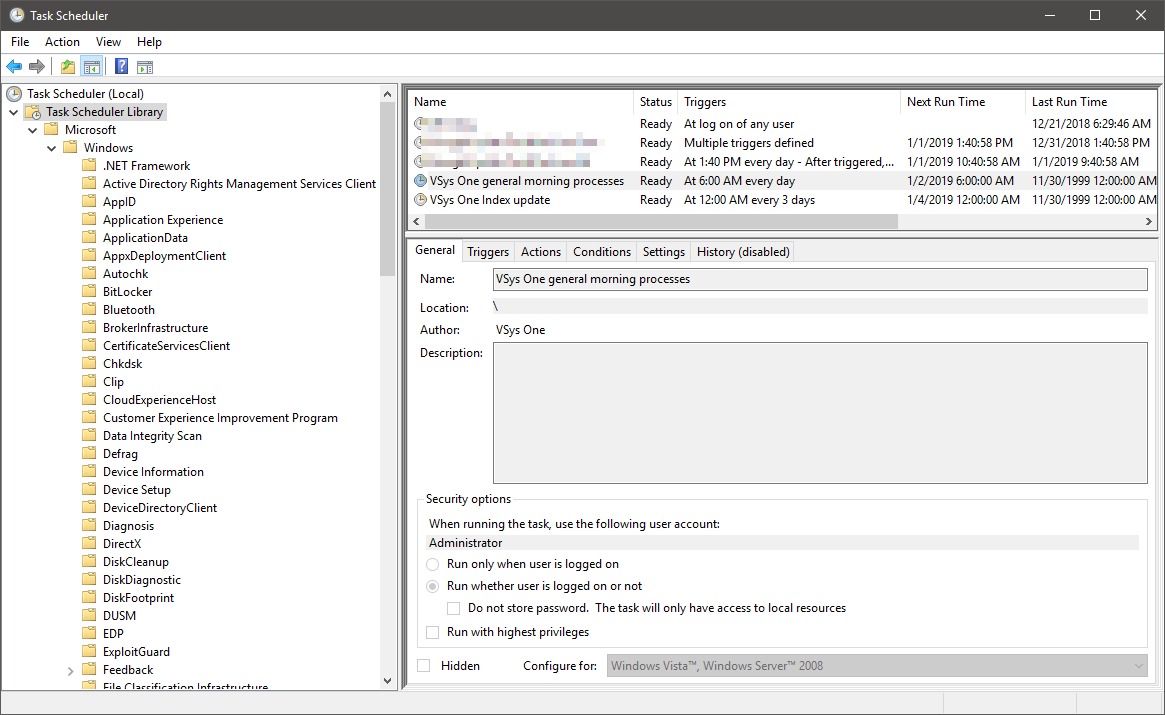

Once you test your first bat file, you can get creative and start writing out a log that you can then upload to Domo. So you can have multiple workbench jobs in one bat file and you can have multiple bat files in a single task in windows scheduler. You can also set a timeout so the job doesn't run too long.
Other settings: if the job fails, you can have it retry. You can have multiple actions to call bat files one after another. Set the action: This is where you will "Start a program" and reference the bat file that you created in the first step. Usually this will be a certain time of the day/week/month. If this is on a server, I recommend on the general tab of the task to set SYSTEM as the user account when running the task and check run whether user is logged in or not and run with highest privileges. Create a task in the windows task scheduler. If you want another job, on the next line, just repeat: "C:\Program Files\Domo\Workbench\wb.exe" run-Job -s -j 496. The workbench job ID can be found in workbench on the overview of the job (click on the job name). In here you are calling the program workbench and running job 495. Command line: "C:\Program Files\Domo\Workbench\wb.exe" run-Job -s -j 495. I recommend using Notepad++ to create them, but you can also use Windows Notepad. For those not familiar with batch files, it is basically a .txt file with. They will run in the order that you list them, so you can put multiple jobs in one batch file. Type " task scheduler" in the search box and then click or tap Task Scheduler in the list of results. Opening the Task Scheduler for the first timeĪ simple way to start Task Scheduler is to search for it in Windows. 
For a guide on creating your own tasks, read: How to create basic tasks with Task Scheduler, in 5 steps. In this guide, we focus on learning how to navigate and understand the Task Scheduler interface. Both triggers and actions can be defined by you and the possible combinations are endless. For example, you can schedule a disk cleanup every week or you can send an email each time you log into Windows. Different actions can be performed: running a program, sending an email, executing a file, or displaying a message. An action is the work performed when the task is triggered. The computer starting up or entering an idle state, the user logging on - all these are possible triggers. A trigger is the cause/event which can make a task run. For a better understanding of how Task Scheduler works, you must be familiar with two terms: triggers and actions.






 0 kommentar(er)
0 kommentar(er)
